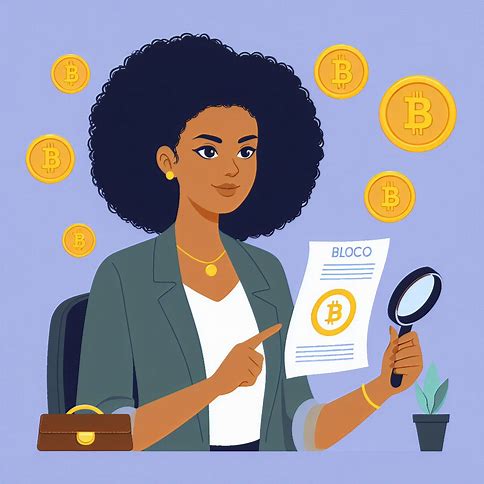Buying your first crypto might seem intimidating, but there is definitely a way around it. Here is simply how to buy cryptocurrency through an exchange.
1. Choose a Reputable Exchange
With hundreds of exchanges out there, the first step is selecting a trustworthy platform that suits your needs. Consider factors like:
1. Reputation – Look for an exchange with a solid track record, positive user reviews, and no history of major hacks or security breaches.
2. Supported cryptocurrencies – Make sure the exchange offers the specific coins or tokens you’re interested in buying.
3. Payment methods – Some exchanges only allow bank transfers for fiat deposits, while others also support credit cards, debit cards, PayPal, etc. Choose one that offers your preferred payment option.
4. Fees – Compare the fees charged by different exchanges, including trading fees, deposit/withdrawal fees, etc. Lower fees mean you keep more of your money.
5. User interface – As a beginner, an intuitive, user-friendly platform will make your trading experience much more enjoyable.
2. Create an Account
Once you’ve chosen an exchange, the next step is creating an account. Visit the exchange’s website and look for a “Sign Up” or “Create Account” button. You’ll be asked to provide some personal information, which typically includes:
- Full name
- Email address
- Phone number
- Country of residence
You’ll also need to create a strong password. Use a unique combination of letters, numbers, and symbols, and avoid using the same password you have for other online accounts.
3. Identity Verification (KYC)
To comply with regulations and prevent fraudulent activities, most reputable exchanges require users to complete a process called Know Your Customer (KYC). This involves submitting proof of identity, such as:
- Government-issued ID (passport, driver’s license, etc.)
- Proof of address (utility bill, bank statement, etc.)
The verification process may take a few days, but it’s a crucial step to ensure the security of your account and the exchange.
4. Add a Payment Method
After creating and verifying your account, you’ll need to add a payment method to deposit funds into your exchange account. The available options will vary depending on the exchange and your location, but common methods include:
- Bank transfer (ACH, SEPA, wire transfer)
- Credit or debit card
- PayPal
Keep in mind that different payment methods may have different fees, processing times, and limits. For example, credit card deposits are usually instant but come with higher fees, while bank transfers may take a few days but have lower fees.
Related: How to Invest in Cryptocurrency: A Beginner’s Guide
5. Buy Cryptocurrency
With your account set up and funded, you’re ready to make your first cryptocurrency purchase. Here’s a step-by-step guide using Coinbase:
- Log in to your Coinbase account and click on the “Buy/Sell” tab.
- Select the cryptocurrency you want to buy (e.g., Bitcoin, Ethereum, etc.).
- Enter the amount you want to purchase in fiat currency or the amount of crypto you want to buy.
- Review the details of your transaction, including the fees and the amount of crypto you’ll receive.
- If everything looks good, click “Confirm Buy” to complete your purchase.
Key Takeaways
1. A cryptocurrency exchange is an online platform that allows you to buy, sell, and trade various cryptocurrencies.
2. When choosing an exchange, consider factors such as reputation, supported cryptocurrencies, payment methods, fees, and user interface.
3. To create an account on an exchange, you’ll need to provide personal information and complete a Know Your Customer (KYC) process for identity verification.
4. Add a payment method, such as a bank transfer or credit/debit card, to deposit funds into your exchange account.
5. To buy cryptocurrency, select the desired coin or token, enter the amount you want to purchase, review the transaction details, and confirm your purchase.
6. Your newly acquired cryptocurrency will be stored in your exchange wallet, and you can view your balance in the designated tab on the platform.
Frequently Asked Questions
1. How long does it take to create an account on a cryptocurrency exchange?
Creating an account on a cryptocurrency exchange is usually a quick process that takes just a few minutes. However, the account verification (KYC) process may take longer, typically a few days, depending on the exchange and the volume of verification requests they are processing.
2. What is the minimum amount of cryptocurrency I can buy?
The minimum amount of cryptocurrency you can buy varies depending on the exchange and the specific cryptocurrency. Some exchanges have a minimum fiat currency amount (e.g., $10), while others have a minimum cryptocurrency amount (e.g., 0.001 BTC). Check the exchange’s FAQ or help center for specific information on minimum purchase amounts.
3. Are there any fees associated with buying cryptocurrency on an exchange?
Yes, most exchanges charge fees for buying, selling, and trading cryptocurrencies. These fees can include:
1. Deposit fees: Charged when you add funds to your account, depending on the payment method used.
2. Trading fees: A percentage of the transaction amount, charged when you buy or sell cryptocurrency.
3. Withdrawal fees: Charged when you transfer cryptocurrency or fiat currency out of your exchange account.
4. Can I buy cryptocurrency with a credit card?
Many exchanges allow you to buy cryptocurrency with a credit card, but not all do. Keep in mind that buying crypto with a credit card often comes with higher fees compared to other payment methods, such as bank transfers. Additionally, some credit card issuers may treat cryptocurrency purchases as cash advances, which can result in even higher fees and interest rates.
5. How do I keep my cryptocurrency safe after buying it on an exchange?
While reputable exchanges use various security measures to protect users’ funds, it’s generally recommended to store your cryptocurrency in a personal wallet for added security. There are two main types of wallets:
1. Hot wallets: Connected to the internet, making them more convenient for frequent transactions but potentially more vulnerable to hacks.
2. Cold wallets: Offline storage methods, such as hardware wallets or paper wallets, which offer greater security but less convenience for frequent trading. Consider transferring your cryptocurrency to a personal wallet after purchasing it on an exchange, especially if you plan to hold it for an extended period.










